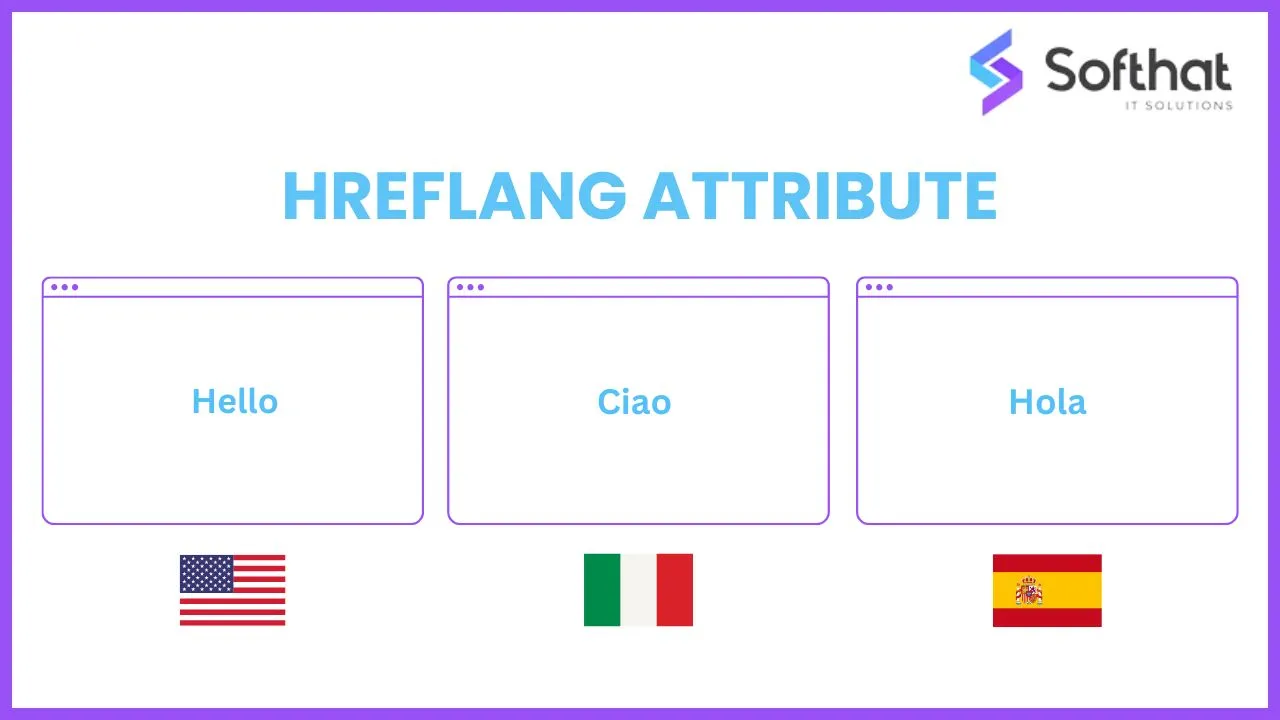
Table of Contents
In today’s globalized digital landscape, websites often cater to audiences from different regions, speaking various languages. To effectively target these diverse audiences, webmasters need to ensure that the right content is delivered to the right users.
This is where the hreflang attribute comes into play. In this article, we will explore what hreflang is, why it’s important, and how to implement it correctly on your website.
What is Hreflang?
Hreflang is an HTML attribute used to specify the language and geographical targeting of a webpage. It helps search engines understand which version of your content should be shown to users based on their language preferences or location.
For example, if you have versions of your website in English for the United States and in Spanish for Spain, the hreflang attribute will guide search engines in delivering the appropriate version to users in these regions.
Why is Hreflang Important?
Below are some of the reasons why hreflang is important.
1. Improving User Experience
Hreflang ensures that users are directed to the most relevant version of your website, enhancing their experience by providing content in their preferred language and context. This reduces bounce rates and increases engagement.
2. Preventing Duplicate Content Issues
Without hreflang, search engines might view different language versions of the same content as duplicates, potentially harming your SEO. Implementing hreflang helps search engines recognize these versions as distinct, avoiding penalties for duplicate content.
3. Boosting International SEO
For businesses targeting multiple regions, hreflang is crucial for optimizing international SEO. It helps search engines deliver region-specific content, improving visibility and rankings in different markets.
How to Implement Hreflang the Right Way
Implementing hreflang correctly is essential for reaping its benefits. Here’s a step-by-step guide on how to do it:
1. Identify Your Target Languages and Regions
Start by identifying the languages and regions your website caters to. This will determine the hreflang tags you need to implement. For instance, if you have content in French for users in France and Canada, you’ll need hreflang tags for fr-FR and fr-CA.
2. Use the Correct Hreflang Tags
Hreflang tags can be implemented in three ways: in the HTML <head> section of your pages, in the HTTP header, or in your XML sitemap. The most common method is to place them in the HTML <head>. The basic format of a hreflang tag is:
<link rel="alternate" href="https://www.example.com/fr/" hreflang="fr-FR" />href: The URL of the alternate version of the page.hreflang: The language and region code.
3. Implement Self-Referencing Hreflang Tags
Each page should include a hreflang tag for itself. This self-referencing tag tells search engines that the current page is the correct version for users in the specified language and region.
<link rel="alternate" href="https://www.example.com/en/" hreflang="en-US" /> 4. Cross-Link All Language Versions
Ensure that all language versions of a page reference each other using hreflang tags. This helps search engines understand the relationship between the different versions.
5. Include a Default Hreflang Tag
In addition to specific language and region tags, include a default tag (often x-default) for users whose preferences don’t match any of the specified languages or regions.
<link rel="alternate" href="https://www.example.com/" hreflang="x-default" /> 6. Test Your Implementation
After implementing hreflang tags, use tools like Google’s Hreflang Tags Testing Tool or the Search Console to verify that your tags are correctly set up and recognized by search engines.
Common Mistakes to Avoid
- Incorrect Language Codes: Ensure you use the correct ISO 639-1 language codes and ISO 3166-1 Alpha 2 region codes.
- Missing Self-Referencing Tags: Always include a hreflang tag for the page itself.
- Broken Links: Double-check that all URLs in your hreflang tags are correct and lead to the appropriate pages.
Conclusion
Hreflang is a powerful tool for improving the user experience and SEO of multilingual and multi-regional websites. By implementing hreflang correctly, you can ensure that users are directed to the most relevant content, reduce duplicate content issues, and optimize your site for international audiences.
Optimize Your Global Reach with Professional Hreflang Implementation
At Softhat IT Solutions, we specialize in international SEO and can help you implement hreflang tags to target global audiences effectively. Our team ensures that your website delivers the right content to the right users, maximizing your reach and engagement. Contact us today to get started!
